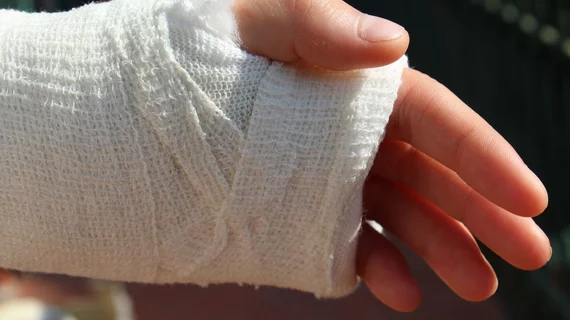Ultra-low-dose CT bests digital radiography for extremity fractures on everything but cost
Ultra-low-dose CT (ULD-CT) catches more fractures of the wrist and ankle than digital radiology (DR) without exposing the patient to higher radiation doses. What’s more, the advanced modality supplies a closer look at these injuries and shortens wait times between imaging exams and radiology reports.
The only downside to choosing ULD-CT over DR is the former’s higher cost.
So found the authors of a study conducted at Sweden’s Karolinska Institute and published in Skeletal Radiology.
Zlatan Alagic, MD, and colleagues used first DR and then a ULD-CT protocol the team designed to prospectively image 203 patients presenting in the ER with 207 extremity injuries.
Assigning two radiologists to analyze the images independently, the researchers found ULD-CT found 109 fractures vs. only 73 for the x-rays.
Also, the CT yielded additional fracture-related findings in 15.9% of the patients (33 cases) and confirmed or ruled out suspected fractures at a rate of 9.2% (19 cases).
Mean effective radiation doses were comparable between the two modalities, while mean times to preliminary radiology reports were shorter for the CT.
The CT interpretations led to changes in treatment plans in some 34 cases (16.4%).
In their discussion, Alagic and colleagues note the considerably higher cost of ULD-CT over DR in their department, where it’s around twice as expensive.
They also point out that ULD-CT requires greater data-storage capacity, further adding to final overall costs, and the technology may be dismaying to ED physicians and orthopedic surgeons unfamiliar with CT slices vs. planar x-rays.
However, the authors wrote, physicians from both those specialties “were positively surprised with the increased fracture detection rate of the ULD-CT, and most orthopedic surgeons also felt that 3D-rendered images—which the ULD-CT provided—added value in their planning of the surgical approach for open reduction and internal fixation of fractures.”
The study is available in full for free.

